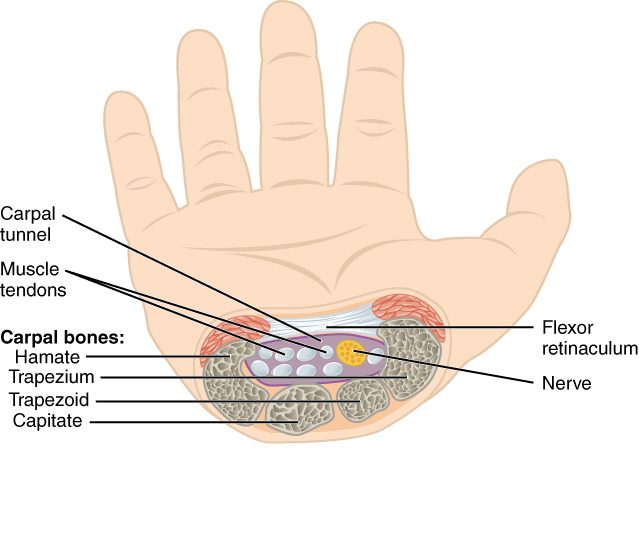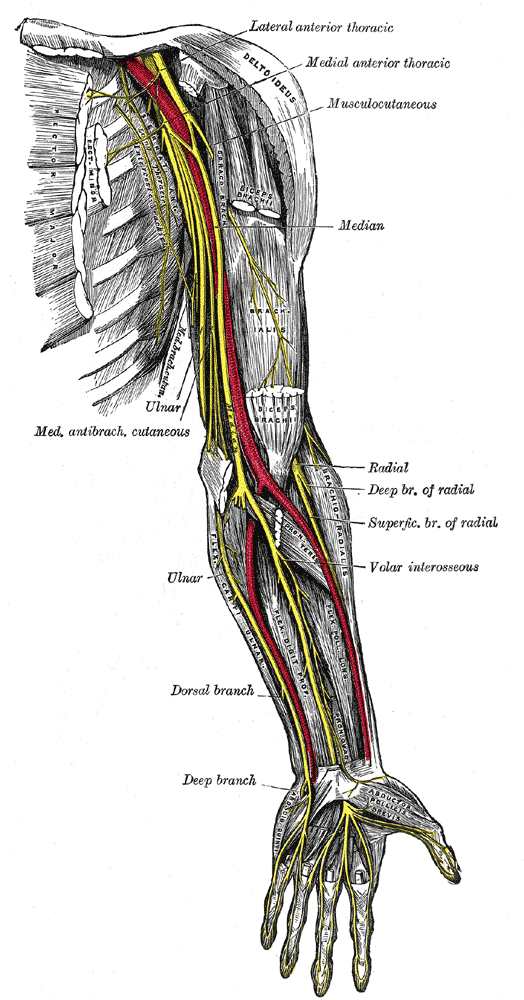Table of Contents
If you have carpal tunnel syndrome, you may have to look beyond your wrist!
With an increase in computer and remote work, we may see the incidence of carpal tunnel syndrome increase.
The problem, however, is that most people only look at the wrist and the neural components in the arm.
This approach may be missing some critical pieces that can influence the health of the median nerve, the nerve which is affected by carpal tunnel syndrome.
What are those pieces? Don’t worry, fam, I’ll tell you in Movement Debrief 164!
Show notes
May 7th-8th, 2022 – Buffalo, NY (Early bird ends April 16th at 11:55 pm)
May 28th-29th – Seattle, WA (Early bird ends May 7th at 11:55 pm)
August 6th-7th, 2022 – Boston, MA (Early bird ends July 16th at 11:55 pm)
How to treat carpal tunnel syndrome
Answer: With repetitive activities such as deskwork becoming more normal, it’s understandable to think risk of developing carpal tunnel syndrome might be higher. However, there are several measures you can take to ensure that the nerve remains as healthy as possible.
And that, my fam, is what we will deep dive into today!
What is carpal tunnel syndrome?
The carpal tunnel is a passageway on the front side (anterior) of your wrist that houses a bunch of tendons, ligaments, bones, and nerves.
The major nerve that passes through this tunnel is the median nerve.

OpenStax College)
Now in order for a nerve to remain healthy, it needs three things:
- Movement
- Space
- Bloodflow
For whatever reason, there are times where pressure within the carpal tunnel (as well as other potential areas, stay tuned) can increase. This pressure increase can reduce space around the median nerve, impede its movement, and potentially limit blood flow.
When the median nerve gets strained in this manner, it can potentially create a variety of symptoms:
- Pain along the anterior forearm all the way to the palm of the hand
- Numbness and tingling along the thumb, index finger, and a portion of the middle finger
- Grip weakness, potentially to the point where you may begin dropping objects
Now the reason why I say that other areas could also have increased pressure leading to nerve symptoms is that space reductions anywhere along the nerve could lead to similar symptom presentation.
In order to see other important areas, we have to look at the median nerve’s anatomy in its entirety.
If we trace the nerve’s path completely, we can see that many joints and tissues could potentially affect the nerve’s health:

- Has fibers from C6-T1 nerve roots in the cervical spine
- Moves down to the medial and lateral cords of the brachial plexus
- Descends down the medial aspect of the arm
- Passes through the anterior compartment of the cubital fossa (right by the biceps tendon)
- Passes between the flexor digitorum profundus and flexor digitorum superficialis
- Passes through the carpal tunnel into the hand
- Divides into recurrent branches and palmar digital branch
As you can see, there are TONS of places that neural compromise can occur with this specific nerve.
Sadly, many clinicians can miss this. I’ve seen many patients who initially had carpal tunnel release surgeries, who then proceeded to have cubital tunnel release surgeries, all without considering the cervical components of symptoms in the hand. This travesty has to be avoided at all costs.
The way misdiagnosis can be avoided is by looking at all influences of nerve health.
To ensure a comprehensive approach to improving this condition, we have to look at a few different factors:
- Ruling out red flags
- Restoring joint range of motion along the nerve tract
- Improving neurodynamics
Let’s dive into each!
Ruling out red flags with carpal tunnel syndrome
Although according to this article, conservative measures should be exhausted first, the carpal tunnel release surgery is pretty dang effective. This may be an effective route to go if both conservative measures have been exhausted AND other areas of neural compromise have been ruled out. The latter piece is something many clinicians ignore.
Now, we movement pro’s can’t tell someone they need surgery (nor is that our call), but we can screen to see if there is a severe nerve compromise. You might want to consider assessing the following things:
- Sensory changes/absence
- Motor weakness (via manual muscle testing and grip strength)
If the above are pretty severe (to the point of dropping objects frequently and lack of sensation) and do not improve fairly quickly with treatment, it likely warrants further medical evaluation.
THAT SAID, you also have to look at other potential areas that could influence nerve health.
Since the median nerve runs from the cervical spine to to hand, it behooves us to check all potentially affected areas. It’s not uncommon for the symptoms to be cervical radiculopathy in this condition, so you’ll want to run:
- Cervical screen
- Cervical radiculopathy test clusters
- Shoulder, elbow, and wrist range of motion
- Perform the median nerve neurodynamic test
- Palpate along the nerve tract
Peep this old school video from ya boi to see how to provide a gross neurodynamic test for the upper limb:
You can then follow that up with one a bit more median nerve specific:
As for median nerve palpation, you’ll want to check the nerve along the following path:
If any of the above tests show any relation symptom-wise or are significantly limited and you’ve ruled out major red flags (#getcheckedoutnotmedicaladvicefam), then you are not dealing with straight up carpal tunnel syndrome. You’ll want to do some stuff to enhance the mobility of the entire median nerve.
However, most people go about improving neurodynamics the wrong way. I think there are some assumptions being made about your classic neurodynamic tests that people gloss over.
That assumption: there is that your supreme clientele has full joint range of motion in the upper extremity (LOLZ).
Improving joint range of motion for carpal tunnel syndrome
So you picked up a positive neurodynamic test and you are thinking: “Yes, I FINALLY figured it out, time to start flossing more than if your favorite rapper was a dentist!”
FALSE.
Let’s look at all the components needed to perform the classic median nerve neurodynamic test.
To maximize neural excursion, you’ll need the following pieces:
- Contralateral cervical sidebending
- Humeral abduction to 90 degrees
- Humeral external rotation to 90 degrees
- Forearm supination to 80-90 degrees
- Full elbow extension
- Wrist extension to 80-90 degrees
What if your supreme clientele can’t express any of these ranges of motion fully? Well, guess what fam, your neurodynamic test likely isn’t as accurate as it could be. The full neural excursion of the median nerve is going to be limited, as well as the ability to restore both sliding and tensioning capabilities.
You have to normalize joint range of motion before targeting neurodynamics.
Now the way that we prioritize what falls back on many of the principles that you might be aware of on this site. I talk about this concept here in regards to the hip, but the principle of tubes filling from the bottom up applies most definitely with neurodynamics.
The way it works in the upper extremity is by prioritizing with the following tenets:
- External rotation measures (flexion, abduction, external rotation) before internal rotation measures (extension, adduction, internal rotation)
- Proximal before distal
Looking at the above measures with these tenets in mind, the most glaring things that we need to improve first are:
- Humeral external rotation
- Humeral abduction
- Forearm supination
These specific measures correlate with expanding the posterior thorax. You can start improving this measure with a move like a wall posterior expansion activity, which biases humeral external rotation and forearm supination:
You can then target specific areas a bit more if there is still some cleanup to get. If shoulder external rotation is still limited, you may want to mess with something that drives ipsilateral trunk rotation, like this move:
If you have to go more distal to improve forearm supination, curls with a supinated grip are an excellent choice. Driving an ipsilateral head turn can also help enhance the cervical component of the test:
Once you’ve nailed the external rotation component, then you’ll want to go after the internal rotation component:
- Cervical sidebending
- Elbow extension
- Wrist extension
You can get a gross internal rotation improvement with something like a bar hang:
I also like alternating lat pulldowns here, making sure you keep the head straight on. This will encourage cervical sidebending without cranking on the neck:
If you need to go more distally, tricep extensions can work great. Use a rope and you should be able to get the wrist components as well:
The terminal move here because of the increased extension in the wrist would be something quadruped:
Once you’ve improved joint range of motion as far as possible, then you can begin to look at improving neurodynamics.
Improving neurodynamics for carpal tunnel syndrome
Now that you’ve set your supreme clientele up for being able to fully excurse the median nerve, you can now work on the nerve’s ability to move and groove.
There are three key movements that nerves ought to be able to perform to ensure adequate dynamics:
- Sliding – the ability for the nerve to move freely along its tract
- Tensioning – The ability for the nerve to compress and get smaller in its entirety (this was akin to nerve stretching in the day)
- Load tolerance – Can the nerve move tolerate movements with high force/speed
Let’s break down how to do each of these actions:
Median nerve sliders for carpal tunnel syndrome
Sliding the nerve will involve moving each nerve along its endpoint in a more slacked position.
Basically, you are going to pull the nerve from one end, while keeping the opposite end of the nerve on slack.
You can see what I’m talking about in this video:
If we look at the median nerve anatomy we can see that the nerve runs from the cervical spine to the hand. Therefore, your two key movements that we will use as our movement points are:
- Wrist extension/flexion
- Cervical sidebending away/towards
You can see how this concept works with this video:
Therefore, you can come up with a bazillion moves that alternate:
- Wrist extension with cervical sidebending towards
- Wrist flexion with cervical sidebending away
Here’s an example of a slider:
Median nerve tensioners for carpal tunnel syndrome
Whereas sliders involve slacked movement, tensioners are pulling the nerve from both ends, which reduces the dimensions of the nerve, making it smaller.
This action is useful because when contractions and such occur, the space around the nerve is reduced. Nerves have to learn to tolerate this action.
We will still use the movements we used with the slider, only the paired actions will be reversed:
- Wrist extension with cervical sidebending away
- Wrist flexion with cervical sidebending towards
Here’s how to do it:
Median nerve load tolerance for carpal tunnel syndrome
Basically, this action involves taking the nerve in its elongated position, but getting there either with heavy load or quickly. You could replicate this action with something like a lift throw, making sure that you finish with the wrist extended.
Sum up
Those are the keys to increasing the health of your median nerve, which can alleviate carpal tunnel syndrome.
To summarize:
- The median nerve needs movement, space, and bloodflow to be healthy
- Rule out serious nerve compromise before treatment
- Range of motion along all joints that can affect median nerve mobility must be expanded first
- Improve neurodynamics after joint range of motion is normalized
What treatments have you found useful for carpal tunnel syndrome? Comment below and let the fam know!

